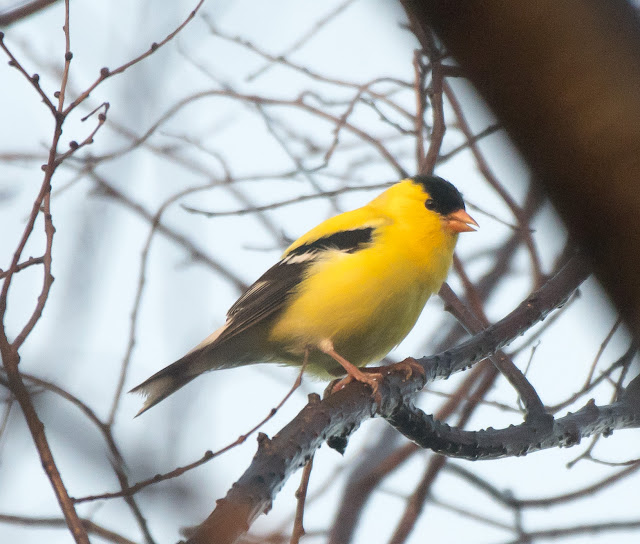My third day in Nebraska was a journey to the old farm and to venture to Camp Hayes Recreational Area, which is a small man-made lake not far from the old family farm. The lake is so small that powered watercraft are not allowed. But with the Red Willow Creek feeding it and flowing out of it, there is a lot of great habitat for birds.
I always get a kick out of seeing recently hatched Killdeer chicks and I had to stop the car to allow this one to find better cover than on the road.
Killdeer Chick
Killdeer Adult
Double-crested Cormorant
Whitetail doe and fawn
Spent a few hours in the town of Hayes Center reminiscing with my classmates and then headed out, taking the long way back to Denver, with an overnight stop in Sidney, Nebraska. My plans were to leave Sidney early in the morning and head west to Kimball, Nebraska. I was keen on trying to locate Mountain Plover in Nebraska. They breed in western Nebraska in a restricted range and habitat, but are probably a bit more common on their breeding grounds just a bit south, across the border in Colorado. The Mountain Plover is a migratory bird that spends winters further south than their breeding grounds, and some show up in Arizona in winter. This is where I have always seen them in the past. So I was going to attempt to locate them in Nebraska. The drive to Kimball was shrouded in fog making visibility really tough. It was still foggy when I arrived on the roads south of Kimball and was getting a feeling that the weather was going to jinx my effort. Walked down one road for a ways without my camera and found a male McCown's Longspur in breeding plumage! Being without my camera was a mistake, so headed back to the car and got my camera, but was not able to relocate the longspur. Headed down the road a bit further and pulled over and lo and behold, there was a Mountain Plover on a side road. I took photos from the car as I did not want to spook it. Yay, success can be so awesome at times! It is a mis-named bird as it does not spend any time in the Mountains. This sighting was also cool to me as this one was in breeding plumage, compared to all those I see in Arizona in winter, non-breeding plumage. Yes, it is a subtle difference, but still fun to see the differences.
Mountain Plover in breeding plumage in Nebraska
Mountain Plover in non-breeding plumage in Arizona for comparison.
Horned Larks were everywhere!
From there I headed into Wyoming where I have never done any birding in the past, so I stopped at an eBird Hotspot called Wyoming Hereford Ranch which is just east of Cheyenne, WY. A great place to spot and I highly recommend this spot to anyone interested. By then the fog had lifted and the lighting was much better. Ended up with 34 species to start my Wyoming bird list.
American Goldfinch
Gray Catbird
Spotted Sandpiper
Western Wood-Peewee
Western Wood-Peewee
My next couple of days was spent in Colorado staying with friends. Birding was not the full focus of my stay, but I did manage a couple of photos during the bouts of rain and overcast skies and even some snow.
Barn Swallow
Steller's Jay
One of the key birds that I wanted in Colorado was the White-tailed Ptarmigan. Unfortunately, due to bad timing and the incredible amount of snow fall in Colorado the roads to the best location were still closed. At least I have learned from this adventure and hopefully I will be better prepared for the next trip to Colorado for this bird. The trip overall, was a success and I am happy with the results. I was able to add 19 new species to my Nebraska list, 9 species to my Colorado list, and got my first 34 species to my Wyoming list.







































































